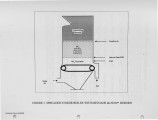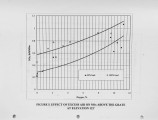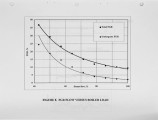Page 3
| Title | Validation of Methane de-NOX Reburn Process for Coal Fired Spreader Stoker Boilers |
| Creator | Rabovitser, Iosif; Chan, Isaac; Loviska, Tim; Hall, David |
| Publisher | Digitized by J. Willard Marriott Library, University of Utah |
| Date | 1996 |
| Spatial Coverage | presented at Baltimore, Maryland |
| Abstract | Experts estimate that more than 2,000 stoker boilers are in operation in the United States firing coal, municipal solid waste (MSW), biomass, and refuse derived fuel (RDF). Historically such boilers have had problems with gaseous and particulate emissions, erosion, slagging, and fouling. Environmental regulations, however, are becoming more restrictive and ultimately will require industries to retrofit many existing solid fuel-burning operations, such as stoker boilers, with technologies that will allow them to meet new emission requirements for nitrogen oxides, carbon monoxide, total hydrocarbons, sulfur dioxide, particulate, and other pollutants. Small quantities of natural gas injection combined with flue gas recycle has been demonstrated effective in meeting new NOx and CO emission requirements. The most common NOx control technology utilized in stokers is selective noncatalytic reduction (SNCR) systems. The Institute of Gas Technology (IGT) with support from the Gas Research Institute (GRI), IGT' s Sustaining Membership Program(S:MP) and the natural gas industry has developed the patented (1,2) METHANE de-NOX reburning process for stokers to reduce NOx emissions to the levels set by current EPA regulations without increasing the levels of other undesirable emissions. In contrast to conventional rebuming, where the reborn fuel is injected above the combustion zone to create a fuel-rich reborn zone, with METHANE de-NOX, natural gas is injected directly into the combustion zone above the grate; this results in a reduction of NOx formed in the coal bed and also limits its formation through decomposition of the NOx precursors to form molecular nitrogen rather than nitrogen oxides. The METHANE de-NOX process was field tested at the Olmsted County waste-to-energy facility in Rochester, Minnesota, and at an incineration plant in Japan. Compared to baseline levels, about 60% NOx reduction and an increase in boiler efficiency were achieved. IGT, Detroit Stoker Company, and Cogentrix are presently demonstrating the METHANE de-NOX technology on a coal-fired 390 M11 Btu/h stoker boiler at a 240 MW cogeneration plant in Richmond, Virginia. Baseline tests were conducted which indicated that 60% NOx can be reduced by utilization of METHANE de-NOX; this has been confirmed by retrofit tests which showed NOx reductions of 60% and 70% using 8% and 25% natural gas (as a percent of heat input to the boiler), respectively. |
| Type | Text |
| Format | application/pdf |
| Language | eng |
| Rights | This material may be protected by copyright. Permission required for use in any form. For further information please contact the American Flame Research Committee. |
| Conversion Specifications | Original scanned with Canon EOS-1Ds Mark II, 16.7 megapixel digital camera and saved as 400 ppi uncompressed TIFF, 16 bit depth. |
| Scanning Technician | Cliodhna Davis |
| ARK | ark:/87278/s66112x1 |
| Setname | uu_afrc |
| ID | 12552 |
| Reference URL | https://collections.lib.utah.edu/ark:/87278/s66112x1 |
Page Metadata
| Title | Page 3 |
| Format | application/pdf |
| OCR Text | C~m?lete implementation of this technology at the Cogentrix plant compared to the ~XlStIng ~NC~ system will provide: 1) The same or better NOx reduction; 2) An Increa~e m boIler efficiency 2 to 3%, 3) Additional environmental benefits due to the reductIon of CO2 and the elimination of potential for ammonia slip; 4) Improved boiler start-up, load change, and operations; 5) Annualized plant cost benefit advantage of about $1.5 to 2.5 million depending on plant capacity factor. BACKGROUND Historically, the thousands of stoker boilers in the United States firing coal, municipal solid waste (MSW), biomass, and refuse derived fuel (RDF) have gaseous and particulate emissions, erosion, slagging, and fouling. Environmental regulations are becoming more restrictive (1990 Clean Air Act Amendments) and ultimately w:ll require industries to retrofit many existing solid fuel-burning operations, such as stoker boilers, with technologies that will allow them to meet new emission requirements for NOx, CO, total hydrocarbons (THC), sulfur dioxide (S02), particulate, and other pollutants. SmaIl quantities of natural gas injection combined with flue gas recycle has been demonstrated effective in meeting new emission requirements. Cogentrix, an independent power producer headquartered in Charlotte, North Carolina, owns and operates 10 cogeneration facilities in North Carolina, Virginia, and Pennsylvania. The largest and newest facility is located in Richmond, Vrrginia. It is a 240 gross MW coal-fired facility serving Virginia Power and a local fiber and chemical plant. The Richmond plant contains eight spreader stoker type coal fired boilers, rated at 295,000 lb/h each. The boilers are ABB VU40 type, burning low sulfur coal from Eastern Kentucky. Each boiler at the Richmond plant is equipped with a SNCR system. The system is the urea based NOxOUT system. Since initial plant start-up in th,e Spring of 1992 there have been problems related to the operation of the SNCR system. Each boiler is also equipped with a spray-dryer flue-gas desulfurization (FGD) system with a pulse-jet fabric filter downstream for particulate removal. The plant is a fully dispatchable facility and operates through automatic generation--control (AGe) from the Virginia Power operating center. AGe allows the plant electric output to be controlled remotely by the Virginia power system operator. Boiler loads are rarely constant, as plant electric output is varied to match system demand. At low system demand levels, electrical production ceases; however, steam is still required by the fiber and chemical plant. During these periods, the boilers are operated without the benefit of the regenerative feedwater heating cycle used when producing electricity. The challenges in applying downstream NOx control to a unit that varies widely in load has been previously published (3,4). The urea-based SNCR system is used for NOx control. Because the SNCR reaction is limited to a temperature window of about 1600 to 1950 F, multiple levels of injectors are required for complete furnace coverage. Initially, water dilution of the urea was controlled by a relief valve on the discharge of the water dilution pump. Water and urea were then pumped to the boiler local-zone control panels, where steam was used for atomization, and the mixture injected into the furnace. Urea solution is metered to 2 |
| Setname | uu_afrc |
| ID | 12535 |
| Reference URL | https://collections.lib.utah.edu/ark:/87278/s66112x1/12535 |






















